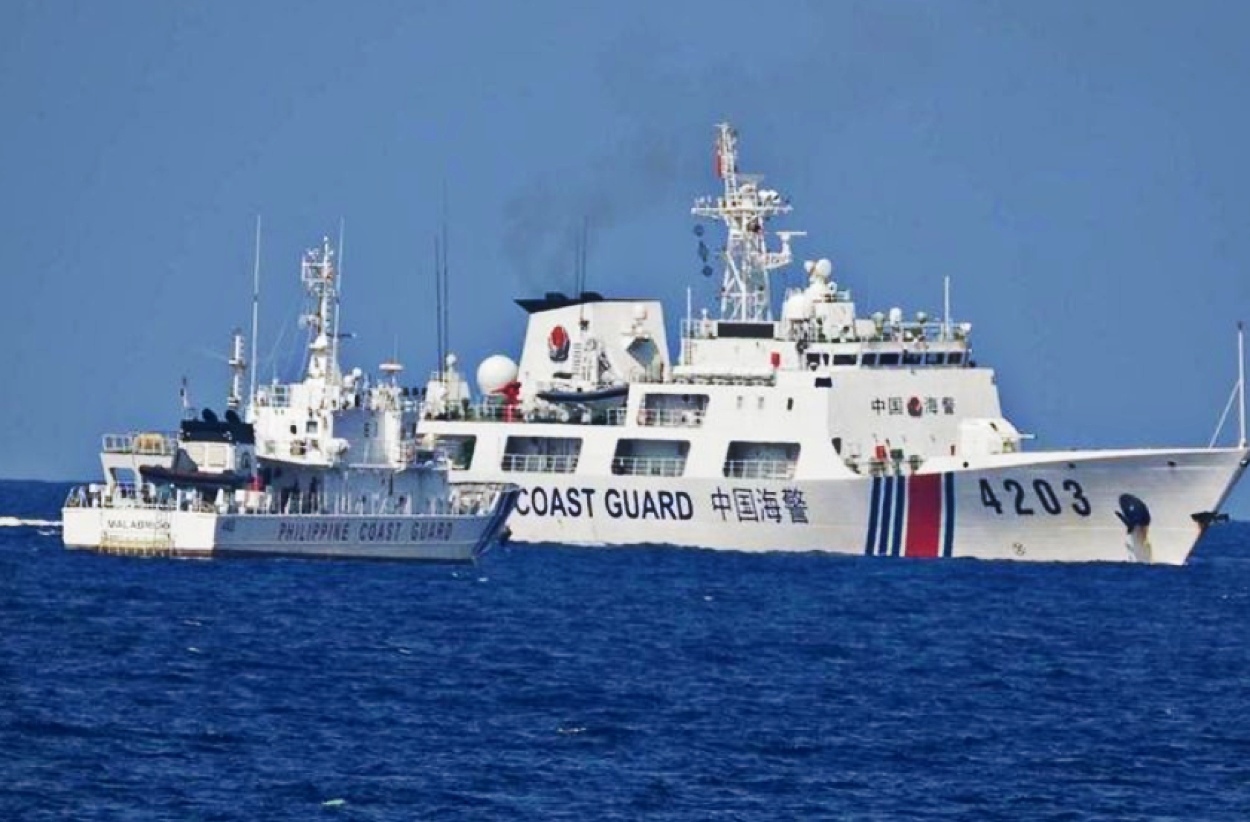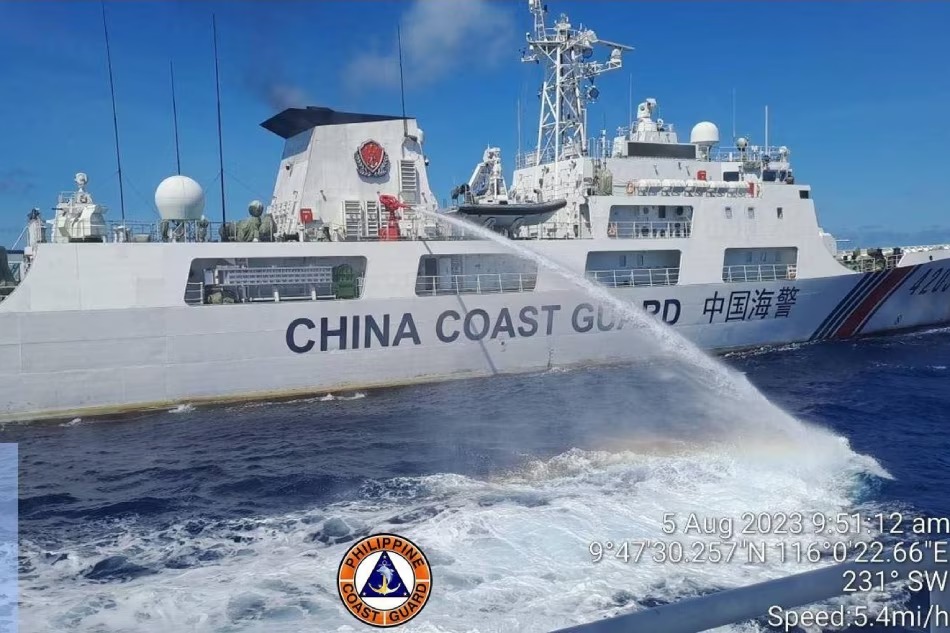The Chinese Coast Guard is the largest in the world in terms of the number of ships and even dwarfs the navies of the country’s regional neighbors combined.
The Chinese Coast Guard operates close to over 1,275 hulls while defending “China’s territorial sovereignty and maritime rights and interests.” However, over the years, the white hull operators have started operating in the “gray zone” and pose a significant security challenge in the Indo-Pacific.
In 2013, China merged five civil maritime agencies into the unified Chinese Coast Guard, referred to as the Maritime Law Enforcement (MLE). This MLE is congruent with the country’s burgeoning national power.
The Coast Guard was also moved from civilian control to the authority of the Military Commission. With no dearth of budget, China has been augmenting its coast guard’s capability.
The Chinese Coast Guard has 225 ships of over 500 tons capable of operating offshore and additional vessels confined to closer waters. China possesses two of the world’s largest coast guard ships, each weighing 10,000 tons at full load.
The Chinese Coast Guard’s Zhataou-class patrol vessel is the world’s biggest armed coast guard cutter, larger than the US Navy’s Arleigh Burke-class destroyer. More than the size of its vessel is its coercive tactics that “deliberately” stop short of war, which has been a conundrum for US allies in Asia.
On March 6, Chinese and Philippine Coast Guard vessels collided in the disputed South China Sea, and four Filipino crew members were injured in a high-seas confrontation. This happened as Southeast Asian leaders gathered for a summit to discuss Beijing’s aggression at sea, among other things.
According to the Philippine officials, the Chinese coast guard ships and accompanying vessels blocked the Philippine coast guard and supply vessels off the disputed Second Thomas Shoal and executed dangerous maneuvers that caused two minor collisions between the Chinese ships and two of the Philippine vessels.
As the collision was going on, two other Chinese coast guard ships used water cannons against a smaller supply boat carrying a Filipino admiral and his sailors. The high-pressure spray shattered the boat’s windshield and mildly injured the admiral and four sailors with glass shards and splinters of debris.
Captain Anurag Bisen (retired), a former submariner of the Indian Navy, told the EurAsian Times: “They (China) are smartly using white hulls instead of grey hulls to avoid escalation, especially in the SCS (South China Sea) and ECS (East China Sea). Also, they (China) have given wide-ranging powers to the Coast Guard to seize, arrest, search, and board any vessel that is seen to be acting against their so-called rules.”
The Philippines, since 2023, has started a “transparency campaign” to expose the “gray zone” tactics of the Chinese Coast Guard, often in contravention of international law. In 2023, the Chinese Coast Guard used a military-grade laser that temporarily blinded a Filipino crew.
Apart from the Philippines, China has overlapping maritime claims with Vietnam, Malaysia, Taiwan, and Brunei. The resource-rich and busy waterway is one of the world’s busy sea lines of communication. Beijing has staked claims on almost the entire sea and has been turning barren reefs into islands equipped with missiles and runways.
In 2012, the Philippines took China to a tribunal at the Permanent Court of Arbitration (PCA) and it ruled in favor of Manila in 2016. The tribunal at the Hague adjudicated that China’s claims of historic rights within the nine-dash line, which Beijing uses to demarcate its claims in the South China Sea, were without legal foundation.
The panel also concluded that Beijing’s activities within the Philippines’ two-hundred-nautical-mile exclusive economic zone (EEZ), such as illegal fishing and environmentally ruinous artificial island construction, infringed on Manila’s sovereign rights. But China has rejected the verdict and used its coast guard to assert control over the region.
East China Sea
While the Philippines has been aggressively unveiling the tactics of the Chinese Coast Guard vessels, which are often accompanied by fishing vessels, Japan is another country at the receiving end of its aggressive maneuvers.
China operates the world’s largest fishing fleet, and it has come to be known as a Maritime militia as it acts at the behest of the Chinese government.

China and Japan are entangled in a dispute over the Senaku Islands and the broader dispute over the Continental Shelf and Exclusive Economic Zone (EEZ) boundary in the East China Sea.
It is part of the country’s strategy to expand control over the East China Sea. Since 2012, China has been persistently trying to unilaterally change the status quo around the Senkaku Islands, which are administered by Japan but also claimed by China and Taiwan.
Chinese Coast Guard vessels operate almost daily in the contiguous zone, which extends for 12 nautical miles beyond the territorial sea. These Chinese ships intrude into the territorial sea around the Senkakus at a frequency of about three times per month.
Chinese coast guard vessels harass Japanese fishing boats operating near the Senkaku Islands. In one instance, Chinese vessels sailed on a Japanese fishing boat’s tail for 27 hours and came as close as 40-50 meters from its stern.
Captain DK Sharma (retired), the former spokesperson of the Indian Navy, equates the Chinese Coast Guard, fishing boats, and PLA-Navy to the different fingers in the hand that are of different lengths but fold together to form a fist.
“There is no difference between the Chinese Navy, Coast Guard, and militia. It is all under the aegis of national maritime security. They just have different roles. It (the Coast Guard) has become a menace. It is a ‘might is the right’ kind of setup. That is why like-minded countries are coming together to establish a rule-based order,” Sharma told the EurAsian Times.
New Powers Of The Chinese Coast Guard
The ‘militarization’ of the China Coast Guard began with the transfer of two type 728 cutters from the PLA-Navy to the Coast Guard in 2007. The two vessels were the largest in the Coast Guard’s fleet at the time.
In March 2017, the Chinese Coast Guard sent its 12,000-ton China Coast Guard (CCG) 3901 cutter on a patrol of the South China Sea. At 12,000 tonnes it is not only the largest cutter in the world but is bigger than the US Navy’s 9,800-ton Ticonderoga-class guided-missile cruisers. Its size earned it the moniker of the “Monster.”

The Chinese government’s change in the Coast Guard Law has further aided the menace of the Coast Guard, evoking concerns from not only Japan and the Philippines but also the US.
The new law stipulates that China’s Coast Guard (CCG) has the authority to respond to situations in which the nation’s sovereignty is infringed. It allows CCG vessels to use forcible measures, including weapons, against foreign ships that it sees as illegally entering its waters, sparking worries that Japanese ships navigating around the Senkaku Islands will be targeted.
Article 3 of the Coast Guard law defines the geographical scope of application to “waters under the jurisdiction of China,” but what constitutes China’s jurisdictional waters is not well defined.
The law is interpreted as China adopting a tougher approach to enforcing its maritime claims. The Chinese Coast Guard will play a key role in settling Beijing’s territorial disputes. While white-hulled coast guards are not as heavily armed as the “grey-hulled” navies, the Chinese Coast Guard is an aberration to it.
The Chinese Coast Guard is unlikely to cross its threshold against the Philippines as the US is treaty-bound to defend the archipelagic country against “an armed attack” in the waters.
- Ritu Sharma has been a journalist for over a decade, writing on defense, foreign affairs, and nuclear technology.
- The author can be reached at ritu.sharma (at) mail.com
- Follow EurAsian Times on Google News




